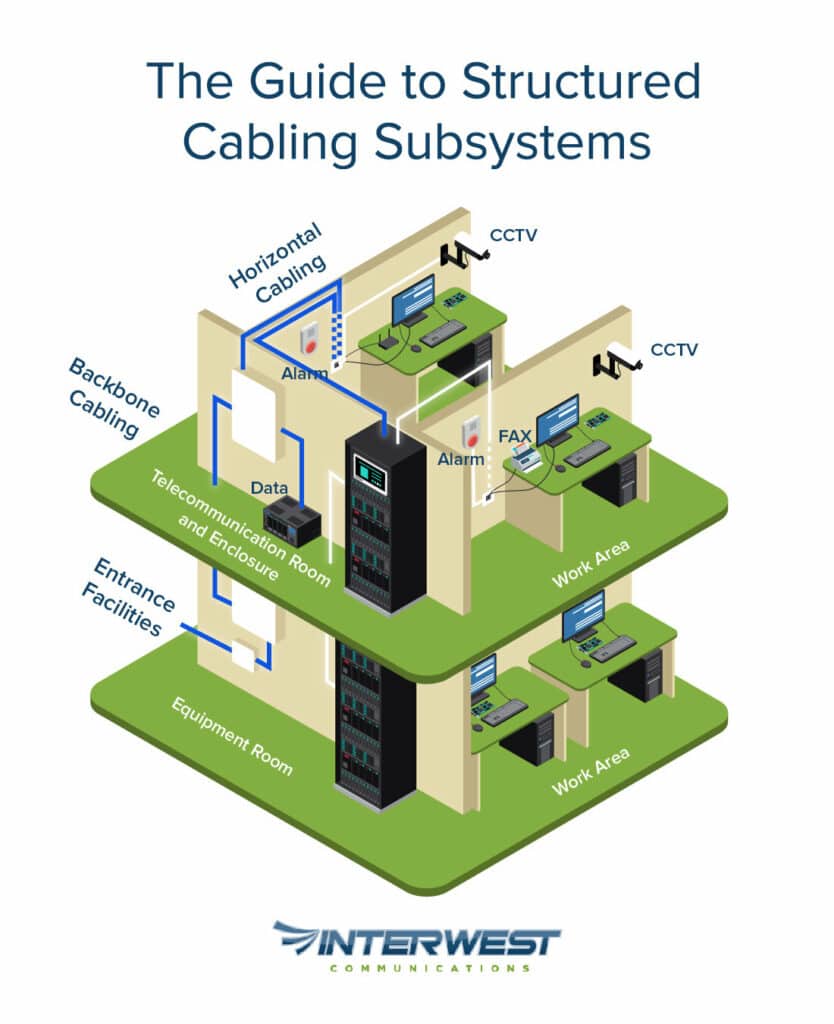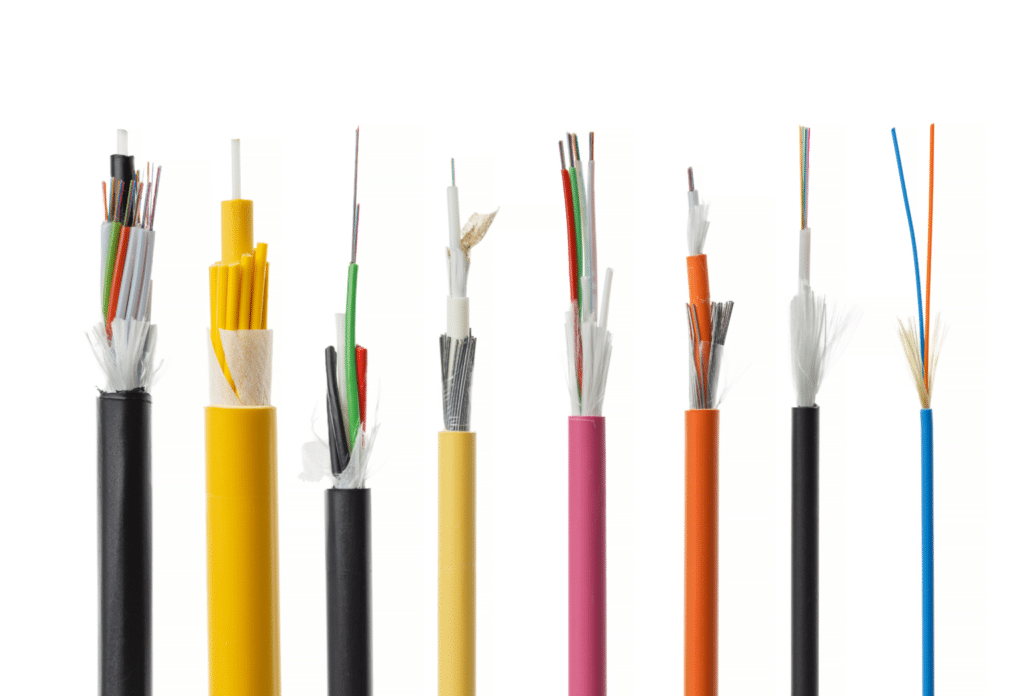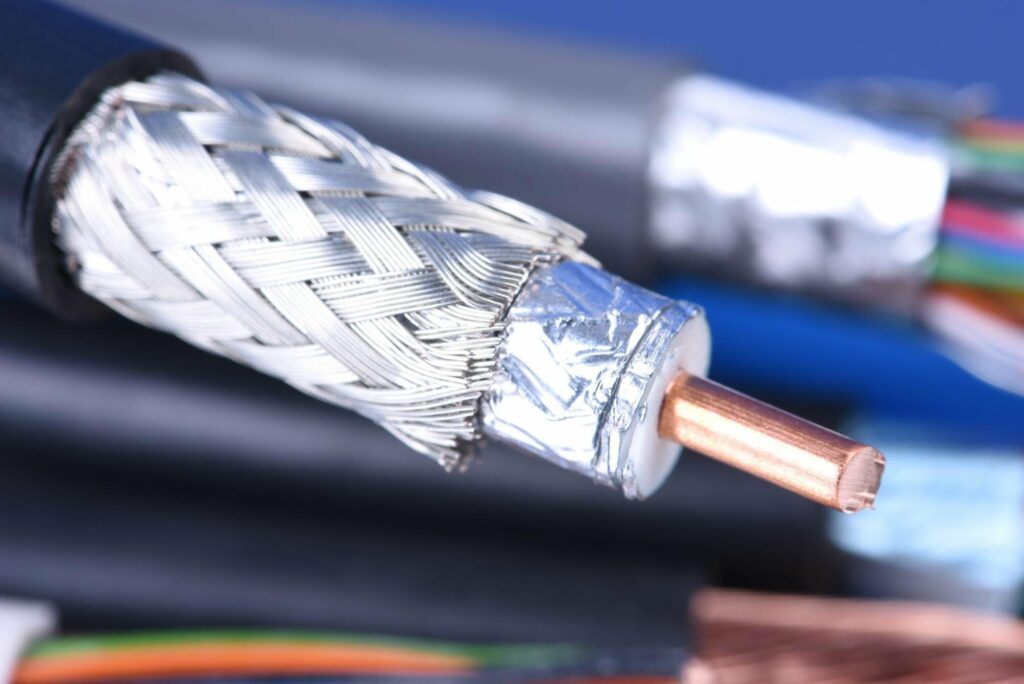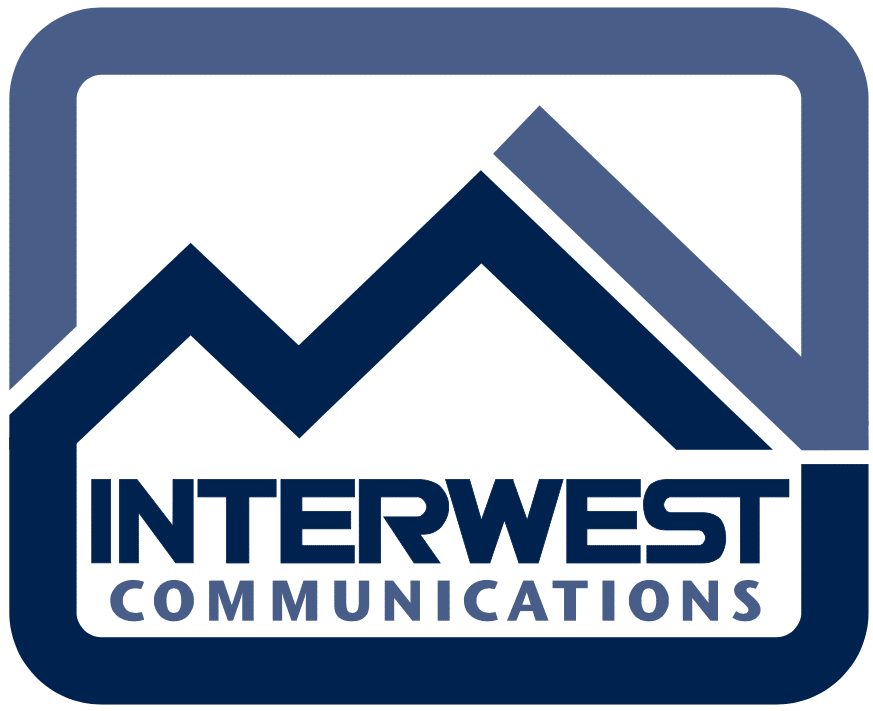- July 8, 2025
- Posted by: Interwest Communications Team
- Categories: News, Uncategorized

Originally posted on October 8, 2020 @ 6:44 pm

Similarly to how the arteries and veins are vital as the transportation network of the body, structured cabling is the medium which carries the lifeblood of your organization—information.
Structured cabling is a cabling infrastructure that provides an organized, standardized approach to cabling. Choosing the right structured cabling solution can have an impact on a range of issues, including data transmission speed, network performance, power consumption, and cost.
You need a dependable, scalable, and high performance network to ensure that you are able to meet the demands of your customers— Interwest does just that. We design solutions that provide a seamless foundation for your information. First, let’s lay a foundation of knowledge on structured cabling. We’ll break down what structured cabling is, how it works, and why it matters.
Cabling Structure & Design Elements
The design and installation of a cabling system are critical to supporting multiple hardware uses. Usually, structured cabling is defined as building or campus telecommunications cabling infrastructure that serves as the foundation of a communication network.
Often these network structures are specified by some standards like TIA/EIA-568. These standards provide guidelines for data center design, management, and operation. But typically, structured cabling consists of a number of standardized smaller elements.
In a structured cabling system, there is a structure created by a series of patch panels and trunks. This method allows for a connection from hardware ports to a patch panel at the top of the rack. Then, that patch panel is connected to another patch panel through a trunk in the MDA.
The Mighty MDA
The MDA (Main Distribution Area) is the main aspect of structured cabling. It provides a place for all the MAC’s (Moves, Adds, and Changes) to be made with short length patch cords.
Patch Panels
A patch panel connects cables. They’re also called “patch bays” and can be attached to network racks. Patch panels use cords to connect to a switch. You can think of the patch panel as a connection hub. It bundles up all the connections to another network. Often, this is how a LAN connects to the internet. You can usually find patch panels in communication closets and data centers at a business.
Switches
A switch, in cabling, is a component of the system that receives, processes, and sends data. The switch connects your patch panels so you can connect devices to a network and share data and access the internet.
Trunk Cables
A trunk is a cable that connects to patch panels. Trunks are a way of consolidating the number of wires running from patch panel to patch panel. They’re essentially a grouping of wires that are bound into one big cable to keep everything neat and organized.

The Six key subsystems of a structured cabling system
1. Entrance Facility
The entrance facility includes the network demarcation point, cables, protection devices, connecting hardware, and other devices that connect with the on-premises cabling at the customer premises
2. Equipment Room
A centralized location to house equipment and wiring consolidation points. It usually serves users inside the building or campus.
3. Telecommunications Room or Enclosure
Usually, an enclosure is precisely what it sounds like, an enclosure to house telecom equipment, cable terminations, cross-connects, and distribution frames. Each building should have at least one telecommunications room or enclosure, and the size of the telecommunications room or enclosure varies based on the size of the service area.
4. Backbone Cabling
The backbone cabling is also called vertical cabling or wring. It offers the interconnection between entrance facilities, telecommunication rooms, and equipment rooms. Commonly, this type of cabling is done from floor to floor, or even between buildings. And the equipment should be connected by cables of no more than 30 m. What’s more, the cables for backbone cabling can be fiber optic cable, coaxial cable, unshielded twisted-pair (UTP) cable, and shielded twisted-pair (STP) cable.
5. Horizontal Cabling
Horizontal cabling is the cabling between telecommunications information outlets in the work area and the horizontal cross-connect in the telecommunications room (TR) or telecommunications enclosure (TE). It contains the telecommunications outlet, optional consolidation points, horizontal cable, mechanical terminations, patch cords or jumpers located in the TR or TE. This kind of wiring usually runs above the ceiling or below the floor. What’s more, both Ethernet cable and fiber optic cable are usually used for horizontal cabling.
6. Work Area
This is where work-area components are used to connect end-user equipment to communication outlets. Work-area components are also called cable components, including patch cables, communication outlets, and station equipment.
Commonly Used Cables in Structured Cabling

1. Fiber Optic Cable
Fiber optic cables are a lot like electric cables, except they’re made out of optical fibers to carry signals and images. These optical fibers are made out of silica or plastic and coated with more layers of plastic inside the cable itself.
Different kinds of fiber optic cables may be used for long-distance telecommunication or high-speed connections between buildings on campus.
2. Twisted Pair Cable
Twisted pair cables are commonly used to connect residential homes and businesses with a telephone company. These kinds of cables date back to the era of radio and telegrams and were actually invented by Alexander Graham Bell! There are two kinds of twisted-pair cables:
-
Shielded twisted pair (STP) – These types of cables are shielded to protect from electromagnetic interference and crosstalk.
-
Unshielded twisted pair (UTP) – UTP cables are used most commonly for telephones and computer networks.

3. Coaxial Cable
Coaxial cables are a type of transmission line, carrying high-frequency electrical signals with low loss. Coaxial cables are commonly used for:
-
Cable television
-
Telephone
-
Broadband internet
-
Computer data
-
Connecting radio transmitter and receivers to antennas
Benefits of Structured Cabling
There are numerous benefits to structured cabling, here are some of the big ones:
-
Cost-effective – Structured cabling is an organized and simple cabling system. It can reduce power and maintenance costs, and it avoids spending money on locating and rectifying issues.
-
Reduced risk and downtime – There is a high risk of human error when people manage an unorganized cabling structure. These mistakes can cause flow disruptions and network downtime. Structured cabling is organized and it’s easy to identify, which can help reduce the risk of downtime.
-
Time-saving – Structured cabling is flexible that can accommodate moves, adds, and changes to the system quickly. It saves installation time as well as maintenance time.
Benefits of Interwest Structured Cabling
We can tackle voice and data cabling projects of any size, including small projects like adding one or two network cable drops. We employ a highly trained staff of installation technicians, and design specialists (BICSI/RCDD), to ensure a successful project from start to finish.
-
Consistency of design and installation – We want to minimize expensive voice and data network problems and issues, so we follow strict installation and testing guidelines.
-
Flexibility – Our installation techniques provide customers with the flexibility to install any combination of computers, network printers, phones, modems, and other analog devices at any location.
-
Adaptability – All voice and data cable infrastructure installed by Interwest is installed with future-proofing in mind, and with a focus on increasing your company’s ROI.
Every structured cabling system is unique. This is due to variations in the architectural structure of the building, which houses the cabling installation; the cable and connection products; the function of the cabling installation; the types of equipment the cabling installation will support — present and future; the configuration of an already installed system (upgrades and retrofits); customer requirements; and, manufacturer warranties.
Interwest is Here to Meet Your Structured Cabling Needs
Whether we install your server or cable your production plant, our cabling is clean, organized and future-compatible. Give us a call to discuss the benefits of structured cabling, and your company’s data needs. With offices in Wenatchee, Spokane, and the Tri-Cities, Interwest Communications serves the whole Northwest with reliable, high-powered communication, data, and security services. Check out our services and see how we can help you with your business phones, security, and networking.
